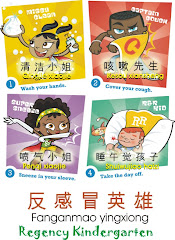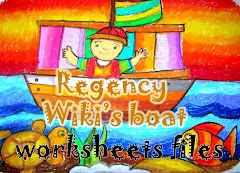
Nama:Seto Mulyadi (Kak Seto)
Lahir:Klaten, Jawa Tengah, 28 Agustus 1951
Agama:Islam
Ayah/Ibu:Mulyadi Effendy/Mariati
Istri:Deviana
Anak:- Eka Putri Duta Sari- Bimo Dwi Putra Utama- Shelomita Kartika Putri Maharani- Nindya Putri Catur Permatasari
Pendidikan:- SD Ngepos, Klaten (1963) - SMK, Klaten (1966) - SMA St. Louis, Surabaya (1969) - Fakultas Psikologi Universitas Indonesia (S1, 1981) - Program Pascasarjana Universitas Indonesia (Magister bidang psikologi, 1989) - Program Pascasarjana Universitas Indonesia (doktor bidang psikologi, 1993)
Karir:- Ketua Pelaksana Pembangunan Istana Anak-Anak Taman Mini Indonesia Indonesia (1983)- Pendiri dan Ketua Yayasan Mutiara Indonesia (1982-sekarang) - Pendiri dan Ketua Umum Yayasan Nakula Sadewa (1984-sekarang) - Dekan Fakultas Psikologi Universitas Tarumanegara, Jakarta (1994-1997) - Ketua Umum Komisi Nasional Perlindungan Anak (1998-sekarang) Kegiatan Lain:- Sekretaris Jenderal Ikatan Sarjana Psikologi Indonesia (1983-1985) - Director at-large International Council of Psychologists (1985) - Anggota International Society for Twins Studies (1985-sekarang) - Anggota Creative Education Foundation (1993-sekarang) - Anggota World Council for Gifted & Talented Children (1994-sekarang)
Buku:Anakku, Sahabat, dan Guruku (1997)
Penghargaan:- Orang Muda Berkarya Indonesia, kategori Pengabdian pada Dunia Anak-anak dari Presiden RI (1987) - The Outstanding Young Person of the World, Amsterdam; kategori Contribution to World Peace, dari Jaycess International (1987) - Peace Messenger Award, New York, dari Sekjen PBB Javier Perez de Cuellar (1987)- The Golden Balloon Award, New York; kategori Social Activity dari World Children’s Day Foundation & Unicef (1989)
Alamat Rumah/Kantor:Jalan Taman Cirendeu Permai 13, Jakarta 15419
Sahabat Anak-anak
Kedekatannya dengan dunia anak membuat dia begitu dikenal sebagai sahabat dan pendidik anak-anak. Namun, tidak banyak yang tahu kalau peraih The Outstanding Young Person of the World 1987 ini pernah melalui getirnya hidup menjadi pembantu rumah tangga, tukang batu, dan tukang semir sepatu di Blok M.
Seto Mulyadi yang kemudian dikenal sebagai Kak Seto pada awalnya bercita-cita menjadi dokter. Manusia berencana tapi Tuhan yang menentukan. Seto malah mendedikasikan hidupnya demi kemajuan anak-anak.
Pria kelahiran Klaten, Jawa Tengah, 28 Agustus 1951 ini memiliki saudara kembar, dr. Kresna Mulyadi dan seorang kakak yang menjadi anggota ABRI. Ketika masih kecil, Seto termasuk anak nakal dan tidak bisa diam. ''Saya ini bengal,'' katanya.
Akibat kebengalannya, Seto pernah jatuh saat bermain sampai kening kirinya sobek. Untuk menutupi bekas jahitan, potongan rambutnya dibuat ala The Beatles. Sampai dewasa, ketika sudah menjadi Ketua Komisi Nasional Perlindungan Anak, Seto Mulyadi tetap setia dengan model rambutnya.
Perjalanan hidup Seto di masa muda penuh liku yang pahit. Ayahnya, Mulyadi - direktur perusahaan perkebunan negara di Klaten - meninggal pada 1966 saat Seto masih berusia 14 tahun. Ekonomi keluarganya pun mulai kembang-kempis. Untuk mengatasi tekanan ekonomi ini, Seto terpaksa dititipkan ke rumah bibinya di Surabaya, bersama kakak dan saudara kembarnya, Kresna. Di sana, Seto melanjutkan sekolahnya di SMA St. Louis Surabaya.
Demi meringankan beban bibinya, juga untuk memenuhi biaya sekolah, Tong - panggilan akrab Seto dalam keluarganya – nyambi jadi pengasong di jalan-jalan selepas sekolah. Ia aktif pula mengisi sebuah rubrik untuk anak-anak di majalah terbitan Surabaya, Bahagia. “Di situ saya mulai memakai nama Kak Seto,” ujarnya. Sejak itulah, dan sampai sekarang, ia dikenal dengan panggilan Kak Seto.
Walau sekolah sambil bekerja, Seto tetap bisa aktif di OSIS bersama kembarannya. Bahkan rapornya selalu bagus. Lulus SMA, ia bercita-cita melanjutkan studinya di Fakultas Kedokteran. Tapi, cita-citanya menjadi dokter kandas, tatkala tak diterima di fakultas kedokteran, baik di Universitas Airlangga maupun Universitas Indonesia. Sementara Kresna diterima di kedokteran dan kakaknya, Ma’ruf, masuk Akabri.
Diam-diam, Seto memendam kekecewaan. “Hidup seperti itu membuat saya tertekan hingga akhirnya saya memutuskan meninggalkan rumah dan pergi ke Jakarta,” tuturnya. Subuh, 27 Maret 1970, ia pun berangkat tanpa pamit, hanya meninggalkan surat kepada ibunya.
Tiba di Jakarta sebagai penganggur yang luntang-lantung, Seto menumpang di garasi milik keluarga temannya, yang kebetulan ia kenal di kereta. Tidur beralaskan dua keset yang digabung, ia hidup sehari-hari dari penghasilan sebagai tukang batu, serta sesekali menulis di majalah Si Kuncung. Sembari bekerja serabutan dia kemudian mendaftar di Fakultas Kedokteran Universitas Indonesia, tahun berikutnya. Tapi, seperti halnya kala di Surabaya, kali ini pun kegagalan kembali menyertainya.
Seto kemudian mencoba melamar pekerjaan ke hotel-hotel. Namun, akhirnya ia malah menjadi tukang cuci dan pel suatu keluarga yang kebetulan mempunyai anak cacat. Seto, yang juga bertugas merawat anak tersebut, harus bersedia menempati ''kamar'' bekas kandang ayam yang berhadapan dengan WC. ''Baunya minta ampun,'' ia mengenang.
“Waktu baru di Jakarta, saya mulai dari bawah, ya, saya kerja jadi pembantu rumah tangga, jadi tukang batu, jadi tukang semir sepatu di Blok M,” kenang Seto. “Berat sekali keadaan waktu itu, dibentak-bentak dan dimarahi oleh tuan saya,” lanjut pria yang merasa tenang bila dekat ibunya ini. Hingga suatu ketika, di rumah tempatnya menumpang, ia tertarik pada acara yang diasuh Bu Kasur di TVRI.
Satu hal, kalau melihat orang lain mampu melakukan sesuatu, Seto selalu berpikir, ''Ah, saya juga bisa.'' Lalu dicarinyalah rumah Bu Kasur, dengan niat ngenger (berguru). Pak Kasur, yang menerimanya, membawanya ke Taman Kanak-Kanak Situ Lembang, Jakarta Pusat. “Akhirnya saya jadi asisten Pak Kasur,” tutur Seto.
Kegagalannya masuk ke Fakultas Kedokteran UI, membuatnya putar haluan dengan memasuki Fakultas Psikologi UI, atas saran dari Pak Kasur. Dua tahun kemudian, ia masih membantu Pak Kasur, sambil menjadi pembantu dan pengasuh anak di rumah Direktur Bank Indonesia, saat itu, Soeksmono Martokoesoemo.
Bersama Pak Kasur, Seto bisa menumpahkan “obsesi” masa kecilnya: kecintaan pada anak-anak - sesuatu yang berawal dari kerinduan datangnya seorang adik, setelah adiknya yang masih tiga tahun meninggal. Pilihannya pun makin mantap di saat mengasuh acara Aneka Ria Taman Kanak-Kanak di TVRI, bersama Henny Purwonegoro. Seto mendongeng, belajar sambil bernyanyi, bermain sulap bersama anak-anak.
Ilmu Pak Kasur ia gabungkan dengan kemahirannya bermain sulap, yang sudah ia pelajari sejak masih SD, melalui buku. Teknik mendongeng, menurut pengagum Mahatma Gandhi serta Napoleon ini, ia peroleh dari penulis dan penutur cerita anak-anak, Soekanto S.A., ditambah dengan pengalamannya sendiri.
Dengan bonekanya Si Komo berikut lagunya, ia pun makin lekat dengan anak-anak. Dan, ekonominya pun mulai membaik, hingga setelah menggondol gelar sarjana psikologi, Seto mengundurkan diri dari keluarga Soeksmono.
Saat masih duduk di bangku kuliah, 1983, Seto mendapat kepercayaan Ibu Tien Soeharto untuk mengetuai pelaksanaan pembangunan Istana Anak-Anak di Taman Mini Indonesia Indah, Jakarta. Bahkan kelompok bermain Istana Anak-anak di yang dikembangkannya, di luar dugaan, memiliki peminat yang cukup banyak. Kini, pengembangan kelompok bermain yang bernaung di bawah Yayasan Mutiara Indonesia itu sudah menyebar di berbagai cabang di Jakarta dan sekitarnya. Bahkan, sampai di Bandung.
Pada 1987, Seto menikahi Deviana – yang usianya terpaut 20 tahun – gadis yang dicintainya. Tepat pada hari pernikahan, di saat tamu berdatangan, pengantin baru Seto-Devi melaksanakan nazarnya: mendongeng di panti asuhan.
Dengan membaiknya keadaan ekonomi, Seto membeli rumah tinggal di kawasan Cireundeu tetapi tidak ia nikmati sendiri. Sebagian dimanfaatkan untuk sarana bermain anak-anak. Di lahan seluas 2.000 meter persegi itu ada perosotan atau ayunan, ruang kelas, kolam renang mini, laiknya taman kanak-kanak. Semua ruangan didekorasi dengan warna-warna yang ceria dan benar-benar membuat anak-anak merasa di alam fantasi mereka.
Di situlah keempat buah hatinya, Eka Putri Duta Sari, Bimo Dwi Putra Utama, Shelomita Kartika Putri Maharani, dan Nindya Putri Catur Permatasari menikmati masa kecilnya. ''Sebenarnya, tujuan membuat halaman yang luas adalah supaya anak-anak aktif bermain, menikmati alam dengan bebas serta lepas,'' jelasnya, pada kesempatan lain. ''Bila anak-anak terlalu dikekang, akibatnya seperti kuda liar.''
Di dalam keluarga, dia menjadikan anak-anaknya sebagai sahabat dan guru. Hubungannya dengan buah hatinya itu sudah dituangkan dalam buku, 'Anakku, Sahabatku, dan Guruku' (1997). Di buku itu dia menuliskan betapa anak dapat menjadi sahabat dalam berbagi masalah. Anak juga bisa menjadi guru untuk belajar tentang kreativitas, spontanitas, kebebasan berpikir, pemaaf, tidak pendendam, dan mempunyai kasih sayang yang tulus.
Kendati begitu, dia masih saja mengaku tidak selalu tahu tentang anak. Dalam kaitan ini, mantan Dekan Fakultas Psikologi Universitas Tarumanegara, Jakarta (1994-1997) ini pernah menuturkan, ''Saya bukan tahu segala hal tentang anak-anak, tapi berusaha untuk tahu tentang mereka.'' Untuk itu, ''Saya memiliki senjata rendah hati, tidak pernah merasa paling berkuasa di keluarga, menghormati mereka sehingga mereka terbuka kepada saya.''
Kedekatannya dengan anak-anak, boleh jadi, membuat Seto kian merasakan kebutuhan untuk perkembangan anak. Dia pun mengharapkan agar anak-anak dipenuhi hak-hak mereka: hak memperoleh suasana gembira, hak bermain, dan hak untuk tumbuh dan berkembang dalam suasana tenang, tanpa merasa tertekan.
Kreativitas dan ide Seto makin cemerlang dengan mendirikan sekolah TK Mutiara Indonesia. Juga membentuk Yayasan Nakula-Sadewa yang menghimpun anak-anak kembar yang berasal dari keluarga kurang mampu. Sebagai pakar psikologi anak yang bergelar doktor, selain menjadi dosen di Universitas Tarumanegara, Jakarta, ia kerap menjadi pembicara dalam seminar, menulis artikel, dan buku.
Atas pengabdiannya pada dunia anak-anak, yang sampai kapan pun akan terus dilakukannya, Seto telah dianugerahi sejumlah penghargaan. Antara lain Orang Muda Berkarya Indonesia, kategori Pengabdian pada Dunia Anak-anak dari Presiden RI (1987), The Outstanding Young Person of the World, Amsterdam; kategori Contribution to World Peace, dari Jaycess International (1987), Peace Messenger Award, New York, dari Sekjen PBB Javier Perez de Cuellar (1987) dan The Golden Balloon Award, New York; kategori Social Activity dari World Children’s Day Foundation & Unicef (1989). Kemudian, walau tak pernah terlintas dalam benaknya, sejak 1998, Seto dipercaya menjadi Ketua Komnas Perlindungan Anak (KPA).
Dalam kapasitasnya sebagai Ketua Komnas Perlindungan Anak (KPA), Seto semakin giat berkarya membela anak-anak. Pasca bencana Tsunami di Aceh misalnya, ia bersama pemerintah merealisasikan pembentukan Trauma Center. Pendirian Trauma Center ini ditujukan untuk menangani gangguan traumatis pada anak-anak Aceh yang menjadi korban bencana alam dahsyat tersebut. Apa yang paling cepat membantu menyembuhkan trauma anak? "Adanya cinta, perhatian, dan dunia indah untuk bermain," kata Seto.
Seto yang mempunyai motto: bangsa yang besar adalah bangsa yang mencintai anak-anak ini berharap supaya semua orang menganggap setiap hari adalah hari anak. “Bukan cuma tanggal 23 Juli saja, tapi setiap hari adalah hari untuk anak,” kata Seto. “Sehingga anak-anak Indonesia sekarang, apalagi yang terpinggirkan, bisa memperoleh hak-haknya sehingga mereka bisa tumbuh dan berkembang dengan baik dan menjadi putra-putri bangsa yang terbaik untuk bangsanya,” ujarnya lagi. ►mlp
















